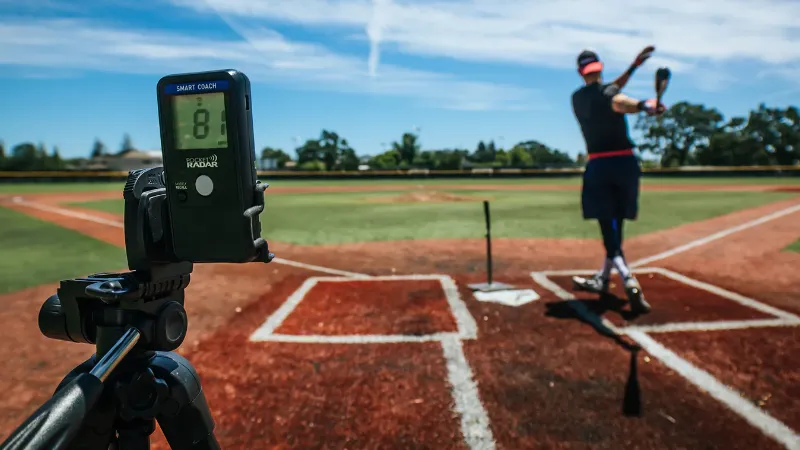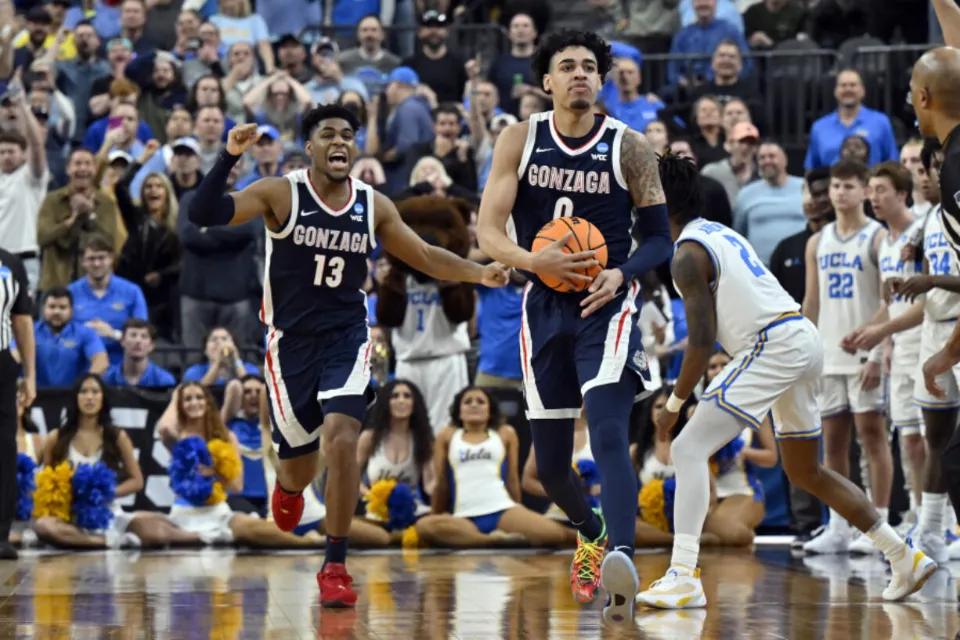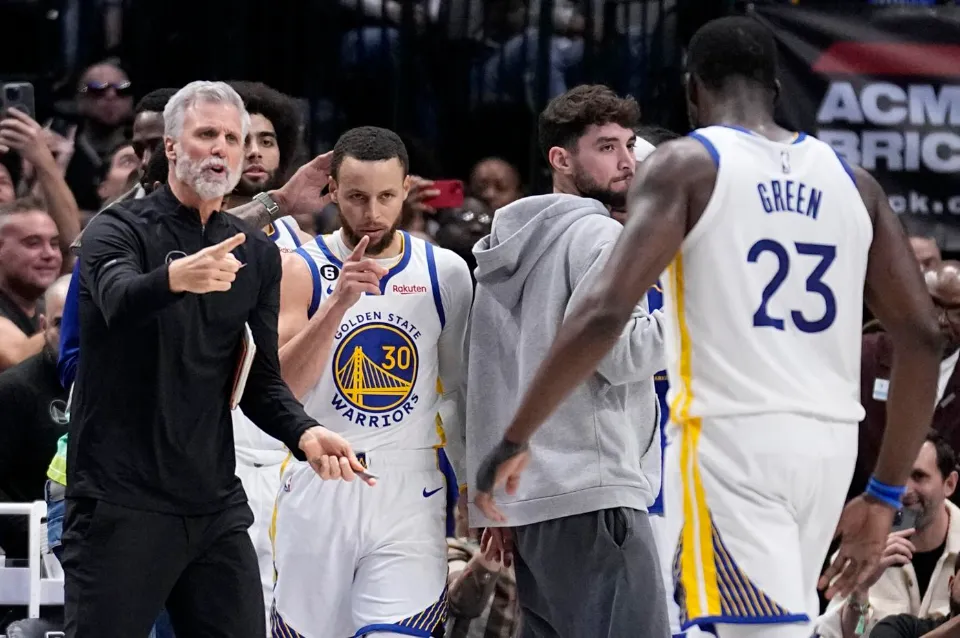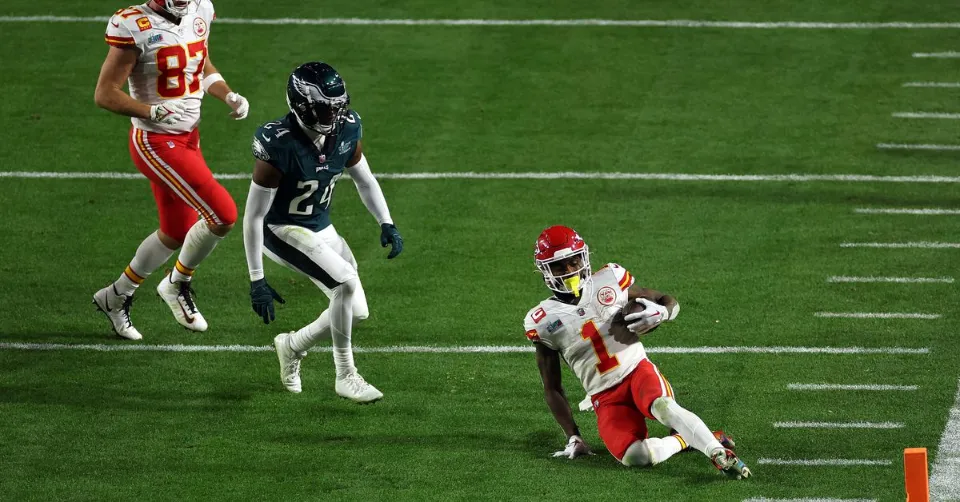What is PAT in Football? All You Want To Know
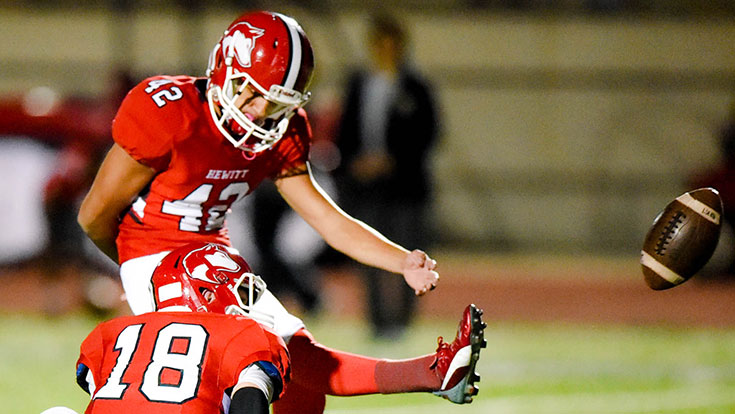
PAT in football stands for the point after touchdown. A touchdown results in six points being awarded to the winning team. After scoring a touchdown, they have a choice of making a short kick for a one-point conversion or one attempt from the two-yard line to get the ball into the end zone for a two-point conversion.
A touchdown typically results in seven points because teams almost always decide to go for the one-point conversion. One point for the point following the touchdown, for a total of six.
We understand that it can be difficult to keep up with all of the acronyms and other terms used in football. PAT is a football term that is frequently asked about.
For more specific information, keep reading.
Table of Contents
Examples of How PATs Work
The ball was traditionally placed on the 2-yard line in the NFL, or the 3-yard line in college or high school, for a PAT attempt, and was typically kicked from inside the 10-yard line.
In an effort to make the play a little bit more exciting, the NFL moved the PAT line back to the 15-yard line for the 2015 campaign. Additionally, the new rule permits the defense to score two points on the play. The defense receives two points if they successfully block a kick on a PAT and return it for a touchdown or successfully recover a fumble or interception on a two-point attempt and return it for a touchdown. An unsuccessful PAT used to be considered fatal.
The impact of the new rule has been significant. Extra points are uncertain now, as opposed to being almost certain under the previous PAT rule. Since 1977, kickers have missed more PATs than any other year; in 2016, for instance, they missed 71 PATs.
A Huge Miss
2016 offered the most glaring illustration. In the AFC Championship game, the Denver Broncos faced the New England Patriots. The Patriots scored a touchdown in the first period, and Stephen Gostkowski was brought on to tie the score.
One of the game’s most skilled and dependable placekickers was Gostkowski. At that point in his career, he had converted an astounding 87.3 percent of his field goal attempts. Since 2006, he had not missed a field goal. Gostkowski was the kicker in the league you wanted to make a PAT in a close game during a conference final.
The error would severely harm New England in the future. The Patriots had to make a two-point attempt to tie the score late in the game when they were trailing the Broncos 20-18. The Broncos won the Super Bowl after they missed, then missed the playoffs. Gostkowski had successfully converted 523 out of 523 extra point attempts up until that point.
A Choice for a PAT
The PAT after a team scores a touchdown is up for selection.
The NFL changed its rules to conform to those of other leagues, but this wasn’t always the case.
The Kicking PAT
Kicking a PAT is the first possible strategy.
Similar to a field goal attempt, a place kicker attempts to kick the ball through the uprights in this scenario.
The team will score an additional point if he is successful.
We’ll go into more detail about the slightly different PAT rules at each level of football in a moment.
The 2-Point Conversion
Attempting a 2-point conversion is the second choice.
As you might guess, the team earns two extra points rather than one if they are successful in converting on this attempt.
Thus, rather than scoring seven points after their touchdown, they would receive eight.
Again, there are different guidelines for a 2-point conversion at each level.
PAT Rules
At every level of football, the fundamental guidelines for a PAT are the same.
A place kicker has the chance to successfully make a kick through the uprights following a touchdown.
A standard place kick formation will be used by the team. The ball will be snapped to a holder, who will set it down on the field on one of its tips. The next step is for the place kicker to try to place the ball between the goal post’s two uprights.
If it succeeds, the team receives a total of six points; if it fails, the team receives only six points.
For ALL divisions of football, these regulations are identical.
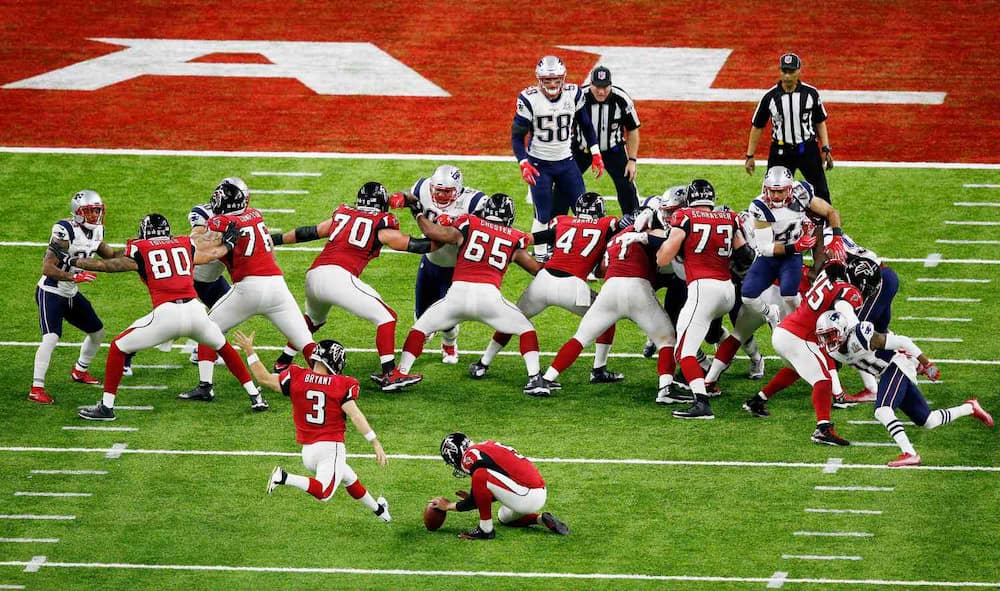
Where the PAT is Attempted From:
Where teams get their PAT from varies depending on the level of football.
Football teams try their PATs from the 3-yard line in high school, college, and youth games.
The 15-yard line is now the starting point for PATs in the NFL.
The league decided to change the rule in 2015 to make the PAT a little bit trickier, so they were previously attempted from the 2-yard line.
How Far is the Kick?
The ball is set up for the play in the same location as the PAT attempt.
In other words, that is where the line of scrimmage will be.
The kicker will typically place the ball approximately 7 yards behind that location.
The goal posts are also 10 yards beyond the goal line, in the back of the end zone.
So the PAT will be the same as a 20-yard field goal in youth, high school, and college football.
This gets broken down as follows:
- Three (3) yards from the goal line is where the ball is spotted by the officials.
- The ball is snapped behind them by the long snapper, forcing the kicker to place the ball about seven (7) yards behind them.
- In addition to the goal line, the goal posts are 10 yards away.
By applying the same math with a different location for the ball, the PAT in the NFL is the same as a 32-yard field goal.
The 2-Point Conversion
In high school and college football, the 2-point conversion has been used for a while.
It was first made available in college football in 1958.
Even so, it wasn’t until recent seasons (after the PAT rule was changed) that the NFL attempted its first 2-point conversion attempt.
Similar to PAT rules, these regulations are essentially the same.
2-Point Conversion at Lower Levels
Football teams attempting a 2-point conversion have one untimed play from the 3-yard line of the opposition during youth, high school, and collegiate games.
They will be able to attempt to cross the goal line with the ball by running an offensive play.
They will receive 2 points if they succeed, but 0 points if they fail.
2-Point Conversion in the NFL
The regulations in the NFL are identical.
Teams only attempt 2-point conversions from their opponent’s 2-yard line, which is the only difference. As you can see, this is somewhat closer in.
In all leagues, the attempting team gets to decide whether they want the ball lined up in the middle of the field or at either hash mark.
Can the Defense Score on Point After Attempts?
You might want to learn more about this subject now that you are aware that PAT stands for point after attempt in football.
One question that comes up frequently is whether the defense can score points during a point-after attempt.
The opposition may be able to score two points if the offense makes a mistake. Two points will be awarded to the defending team if the ball is recovered by the defender and returned to the end zone of the opposing team.
This is also conceivable in the event that a team manages to stop and return a kick during a one-point PAT attempt.
Because the offense can only score a maximum of two points on a PAT, the defense only receives two points for returning the ball to the end zone.
In other words, whether the offense or the defense places the ball in the end zone during a PAT, it will count for two points.
In addition, a safety during an extra point allows the defense to score one point.
When the defense is able to tackle a player with the ball inside their own endzone, it results in a one-point safety on a PAT.
Since teams usually start with the ball close to their opponent’s endzone, one-point safeties are extremely uncommon.
The value of a safety in football is reduced from the traditional two points to just one because it happens during a PAT.
What is a PAT Worth in Football?
Teams may try either of two types of PATs. The first is an attempt that resembles a field goal and is worth one point. A one-point PAT is executed in the same manner as a team’s field goal attempt.
A two-point conversion is similar to scoring a touchdown and is the second option. Although they only have one opportunity rather than four downs, the offense lines up and attempts to run or pass the ball into the end zone.
In football, touchdowns are one of the two most frequent ways for teams to score, along with field goals. Touchdowns alone are worth six points, and One or two PATs are worth one.
Although a PAT allows for a two-point score, teams frequently opt to only attempt a one-point score because it is the simpler option. Football games frequently end with scores in multiples of seven due to the difficulty difference between teams’ scoring in seven-point increments.
During the 2020 season, only one team, the The Philadelphia Eagles attempted one two-point conversion per game on average. Cincinnati, on the other hand, failed to score any two-point conversions all season. The remaining 30 teams averaged between 0 and 1 attempts per game.
So you can see that two-point PATs are uncommon. Due to the difficulty of scoring on two-point conversions and the fact that they are typically not required when the opposing team is only making one-point PATs, two-point conversions are less common.

NFL Extra Point Rules
In the NFL, a lot of touchdowns and PATs are made each week. A few PATs will be seen, and you will gain a solid understanding of the regulations surrounding them, if you watch even one game per week. Here are the extra point rules used in the NFL according to the NFL rulebook:
During a Try, the following shall apply:
- One point is given if an offensive kick leads to a field goal. A Try-kick cannot be executed with the aid of an artificial or manufactured tee. (11-4-1 requirements must be fulfilled.)
- Both teams receive two points if a try culminates in a touchdown.
- If the try results in a play that would normally be a safety for either team, the opponent receives one point.
- There won’t be a replay if any play ends in a touchback, which ends the Try.
- The Try ends when:
- either team scores;
- the ball is dead by rule; or
- a fumble by either team is recovered by a teammate of the fumbling player.
Before the 2015 season, the league put these rules into effect. PAT kicks now begin at the 15-yard line, which is 13 yards farther from the goal line than they did in the past when they were taken from the two-yard line.
The league began allowing the defense to return a PAT, whether it is a one-point or two-point attempt, for a two-point try of their own during the 2015 campaign. Similar PAT regulations are used by other leagues to boost conversion rates.
Can You Fake a PAT in the NFL?
In the NFL, a PAT can be faked. A team may position itself for a one-point PAT kick before attempting to score two points.
To get into the end zone, the offense must snap the ball at the 15-yard line and complete a pass or run from there if they choose to set up for the kick.
The defense won’t be prepared for it, giving the offense more time to run the play while it is being reacted to by the defense. The offensive has some time to make up the lost yardage thanks to the surprise.
How Far is a PAT in the NFL and College?
The length that teams must run to make a PAT varies depending on the type of PAT they are attempting.
Here are the official NFL rules regarding how far from the goal line a team has to score a PAT:
When the referee blows the whistle to signal the start of play, the Try begins. The team that scored the touchdown shall put the ball in play:
- anywhere on or between the inbound lines;
- 15 yards from the defensive team’s goal line for a Try-kick; or
- two yards from the defensive team’s goal line for a Try by pass or run
For both types of PATs in college football, the same distance is used. For both PATs and two-point conversions, they lined up at the three-yard line.
It does not make much of a difference when two-point conversions are off by one yard. In college football, however, the 12-yard disparity makes scoring kick PATs much simpler.
FAQs
NFL PAT Distance
In American football, the extra point or PAT, is the act of lining up to attempt a one-point field goal from the opponent’s 2 yard line, immediately following a touchdown. The team receives 1 point if the kick goes through the uprights.
What is a Safety in Football?
It is a Safety: if the offense commits a foul in its own end zone or; when an impetus by a team sends the ball behind its own goal line, and the ball is dead in the end zone in its possession or the ball is out of bounds behind the goal line.
What is the Meaning of PAT in School?
A practical assessment task (For all candidates offering subjects with a practical component, the PAT mark, which counts 25% (100 marks) of the final examination grade, is a required component of the final promotion mark. The first three terms of the academic year see the implementation of the PAT.
Please leave a comment if you have any queries.
Many thanks for reading.
